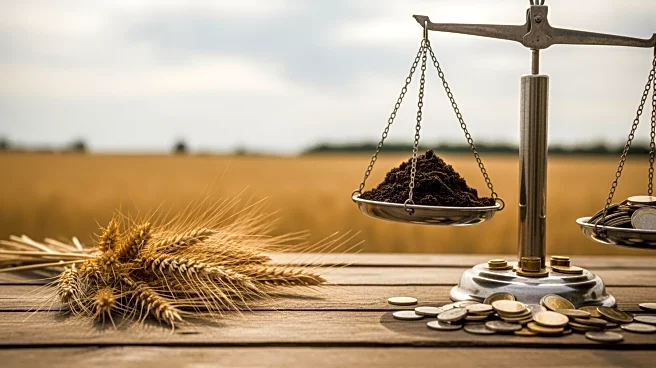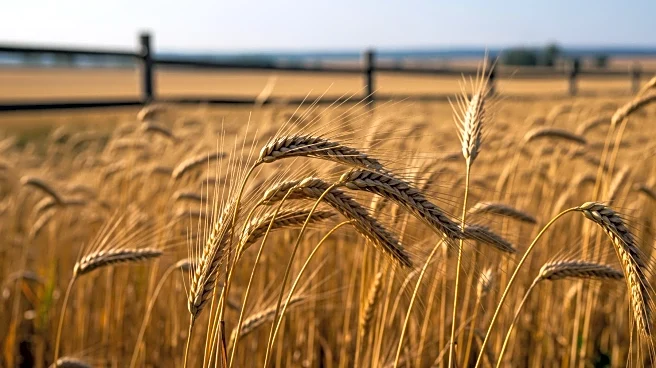What's Happening?
The American agricultural sector is experiencing significant economic pressure due to a 'cost-price squeeze' that threatens farm profitability. This situation arises from high input costs for essentials like fertilizer, fuel, and labor, coupled with soft
commodity prices for staple crops such as corn, soybeans, and wheat. As of November 2025, financial stress is mounting, with projections indicating that a significant portion of U.S. farm borrowers will operate at or below profitability. Government forecasts suggest an increase in overall net farm income, largely supported by direct government payments rather than market fundamentals. Agricultural lenders predict that only about 52% of U.S. farm borrowers will achieve profitability in 2025, a decline from previous years.
Why It's Important?
The 'cost-price squeeze' poses a fundamental threat to the economic viability of U.S. farming operations, impacting farmers' ability to manage debt, invest in future operations, and maintain financial stability. This situation could lead to reduced planting, consolidation, or even farm failures, potentially disrupting future supply stability. The disparity between crop and livestock profitability may drive changes in land use and production strategies. The agricultural sector's ability to adapt, innovate, and secure adequate policy support will be crucial in navigating these turbulent waters.
What's Next?
Farmers are expected to intensify their focus on extreme cost management, scrutinizing operational expenses, delaying non-essential capital expenditures, and exploring efficiency avenues. Risk management strategies will become critical tools to buffer against price volatility. The agricultural sector may see increased consolidation, with smaller farms potentially forced out of business, leading to larger operations benefiting from economies of scale. Adoption of precision agriculture technologies could accelerate as farmers seek technological solutions to manage costs.
Beyond the Headlines
The 'cost-price squeeze' represents a significant inflection point with wider implications for industry trends, regulatory policy, and the structure of farming. It fits into a broader trend of increasing volatility in agricultural markets, driven by climate change, geopolitical instability, and complex global supply chains. The challenging economic landscape is placing pressure on policymakers regarding the upcoming 2025 Farm Bill, with farm groups advocating for enhanced safety nets and improved crop insurance programs.















